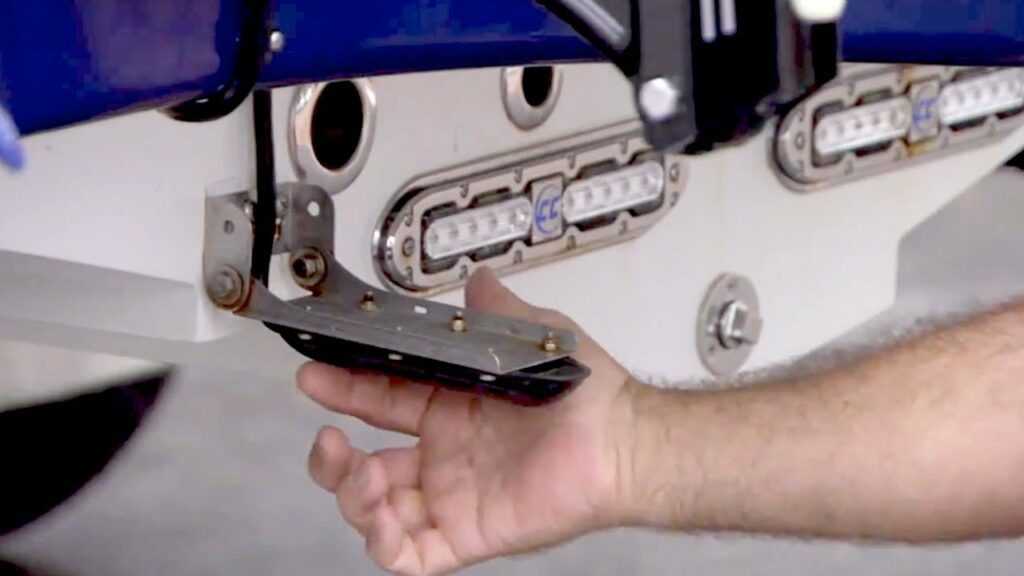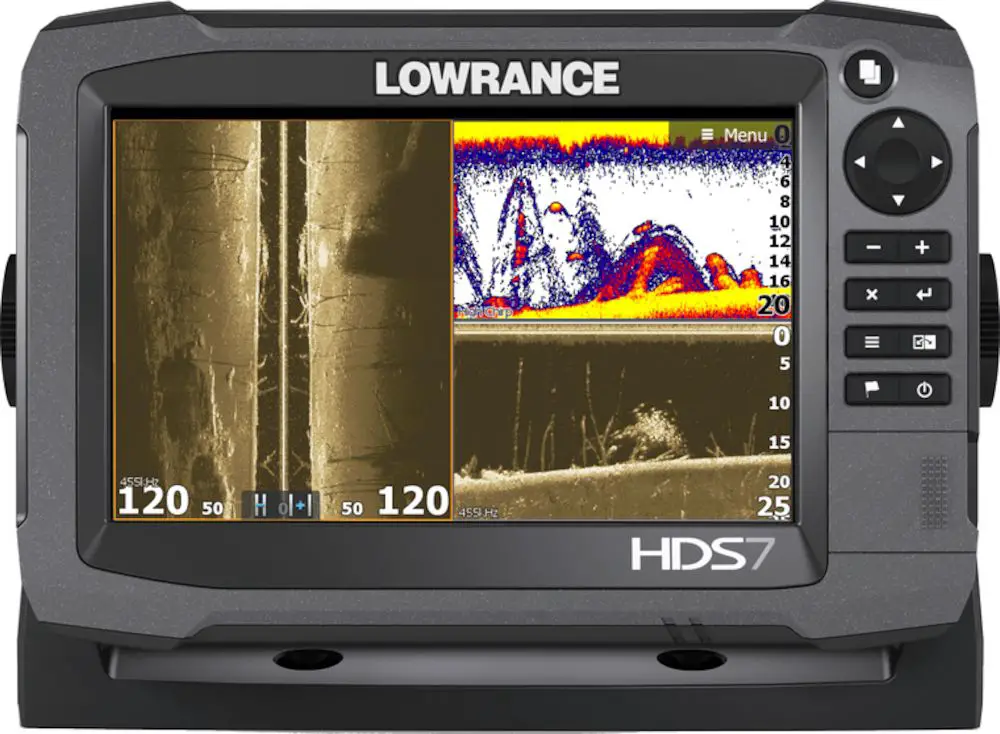
Transducers are devices that are used to convert one form of energy to another. They can serve a ton of purposes, for instance, in accelerometers, pressure sensors, and fish finders.
The Lowrance transducer is one such device. Fishers use it to locate fish in lakes, rivers, or the ocean. However, a lot of people are concerned about the accuracy of the device. There have been a lot of complaints regarding the depth readings generated by the transducer.
Table of Contents
- 1 How Transducers are Used in Fish Finders
- 2 Lowrance Transducer Problem
- 3 Mounting and the Boat Hull Could Affect the Lowrance Transducer Performance
- 4 Loss of Alignment and Its Significance on Transducer Results
- 5 What Are The Effects Of Speed On Lowrance Transducers?
- 6 Can Wear And Tear On The Device Be The Cause?
- 7 Lowrance Transducer Software Upgrades May Improve Results
- 8 Final Words
How Transducers are Used in Fish Finders
A fish finder transducer works like a microphone and a speaker in a single unit. When it catches pulses in water, it transforms them into sound, which then travels in water in the form of pressure waves.
When the waves hit an object such as fish, they travel back to the transducer, which transforms them into electric energy. The transducer then measures the time it takes for the wave to travel back, thus determining the depth and the distance of the fish.
Lowrance Transducer Problem
Recently, there has been an increase in complaints by anglers regarding the quality of Lowrance transducers. The most common problem was ineffective readings. Some say that they have used transducers on their fish finders only for the devices to show false results.
I have previously used Lowrance transducers, and they were always very effective most of the time. Recently, however, I am becoming frustrated by the transducers available.
The sonar readings show the readings at about 1.8 meters, and then it stops. It may restart later but will then stop again, showing some erratic readings.
When these problems start, the sonar readings can fluctuate again even when the boat is still in the water.
When it restarts, the sonar can show a different reading even when the boat has not moved even a bit. It may show these readings or stop and remain at that reading the entire day after that.
Mounting and the Boat Hull Could Affect the Lowrance Transducer Performance
One of the main courses of the Lowrance transducer problem is mounting. When mounting it on a boat, it must be parallel with the bottom of the boat.
If it goes lower, it will not show proper readings. Also, if it is mounted higher, the readings will be erratic because of air bubbles caused by the boat’s movement.
When mounting the transducer on the boat, you should avoid leaving a pick-up space between the transducer and the boat on the front of the transducer.
The rationale behind this is that the transducer may have to pick up more vibrations when there is that gap, and that will automatically lead to poor readings that are not correct.
Loss of Alignment and Its Significance on Transducer Results
It is crucial to note that the transducer seeks to convert the movement of the fish under the water to electric energy that can be displayed on the screen and thus pinpoint the fish location.
If it is not correctly fixed on the boat, there will be a lot of interference and, therefore, incorrect readings.

Most problems related to this device do not occur immediately after purchase. The Lowrance transducers will be working very well for a while. However, as the boat continues to be used, the images continue to deteriorate and finally stop.
Read all about the Lowrance fish finder here!
The reason behind this is that when boats are in the water, they are constantly encountering objects and debris.
For instance, one could encounter coconuts floating on the water. When these objects hit the Lowrance transducers, they may get out of alignment with the boat’s base and therefore cause poor readings.
You should check the transducer every time you go fishing to make sure it is placed well and if it has any damage that could affect the readings.
Since I started checking on the transducer, I have not experienced its erratic readings. One day, I even found a coconut slide in half sticking out on the transducers. That alone could make it show a blank screen for hours until it the debris dislodges from the transducer.
What Are The Effects Of Speed On Lowrance Transducers?
Another major issue with the transducers is speed. When riding the boat at high speeds, the bottom or hull of the boat may create a lot of interference.
This is because boat makers tend to leave some lifts on the hull.
There are also drill holes at the back of the hull designed to assist with stability. At high speeds, these will lead to bubbles that are directed towards the transducer.

The waves created by the boat are also another challenge for the transducers. When the waves bombard the Lowrance transducer, it may lose the board’s alignment, which could cause erratic readings.
It is, therefore, crucial to making sure that the transducer is fixed properly on the boat to enhance proper readings.
Can Wear And Tear On The Device Be The Cause?
The level of wear and tear on the Lowrance transducers seems to be very high. Close to one and a half years of use, I noticed that the display started to show less depth than I previously could see.
I did not understand what was causing this. I later realized that there was also a lot of clutter on display.
It seems that with time, the transducers start to lose sensitivity. This might have been due to wear and tear caused by the salty water. The water corrodes the transducer’s outer parts, which may cause it to start to experience some interference.
Therefore, it is vital to change your transducer after 2 to 3 years, depending on how much you use it.
Lowrance Transducer Software Upgrades May Improve Results
There is also another challenge that the Lowrance transducers have that most people will overlook. These are issues relating to software.
Like most computerized electronics, these devices need constant updates of software. When the transducers start failing, it may require an update on the software.
Final Words
I think Lowrance transducers are superb and function very well when installed correctly. Also, if the transducer does not hit debris that might affect its positioning, it will function properly.
When operating a boat with a Lowrance transducer, it is crucial to watch your speed. Understanding that ripples and bubbles could develop interference is essential.
With these factors considered, the Lowrance transducer is still a fantastic device. However, maintenance checks are also crucial for the longevity of the device and performance.